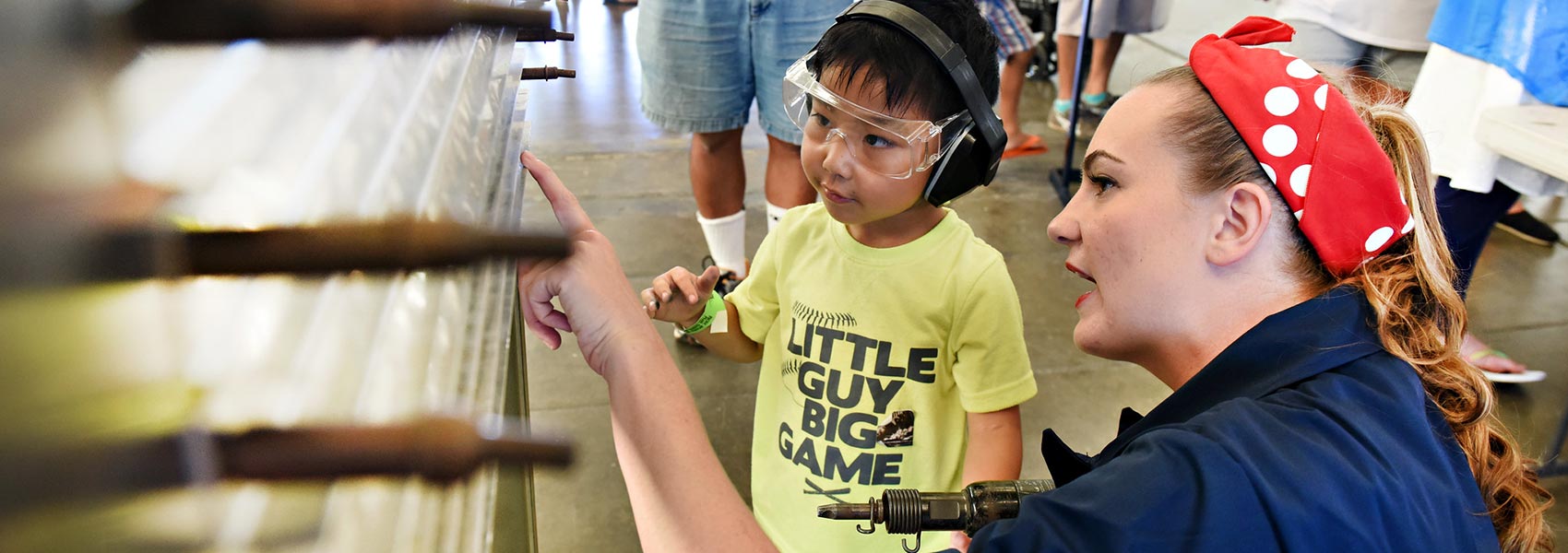A Riveting Tale of Women, the Workforce and World War II
1. Why did you decide to join the workforce?
The men went off to war and I wanted to help out the war effort in any way I could! I saw the Riveter posters saying “We Can Do It” and I applied at the airplane assembly plant the very next day. It wasn’t just me that joined the workforce – lots of women wanted to help. Together we took on the men’s jobs in the factories.
Fact: American women entered the workforce in unprecedented numbers during the World War II, as widespread male enlistment left gaping holes in the industrial labor force. Between 1940 and 1945, the female percentage of the U.S. workforce increased from 27 percent to nearly 37 percent, and by 1945 nearly one out of every four married women worked outside the home.
2. People think they have a tough job when they are at their desk for eight or nine hours. Can you walk us through your duties at an airplane assembly plant?
We did all sorts of jobs in the airplane assembly plant, but we were usually assigned one key role to take over. Some of us worked in the covering and fabric department, where they cut out fabric parts and stitch various covers for airplane bodies and wings, parachutes, and pilot seats. Those women operate the sewing machines and stretch covers on ailerons, elevators and rudders. Others work in the electric assembly department of the aircraft plant, where they put together the radios for each aircraft, and more still are riveters and welders. We work non-stop each day building the aircraft, and come back the next day and do it all over again.
Fact: In 1939, total aircraft production for the US military was less than 3,000 planes. By the end of the war, America produced 300,000 planes.
3. Did you ever have second thoughts about what you were doing?
No, I knew I wanted to help and this was the only way in which I could.
Fact: The World War II war industry gave women the opportunity to contribute to the war effort and to earn their own living – many for the first time in their lives. After the war, many women workers fought to remain in their jobs, while others used their earnings to establish households.
4. What was one of the biggest lessons you took away from your time in the factory?
I learned I could do any kind of job. It opened my eyes to all kinds of futures I could have.
Fact: Most women workers wanted to keep their jobs, enjoying the financial independence and respect they earned.
5. What is the legacy you are proudest of?
I am proud of the legacy of the can-do spirit that defined “The Greatest Generation” and how the ways I was able to contribute to the war effort paved the way for a new chapter for American women.
Fact: Majority of women who worked in factories during World War II expressed a profound sense of personal accomplishment and newfound self-worth that had lasting effects on both the Civil Rights Movement and the Women’s Rights Movement.
More than 310,000 women worked in the U.S. aircraft industry in 1943, making up 65 percent of the industry’s total workforce (compared to just one percent in the pre-war years).

